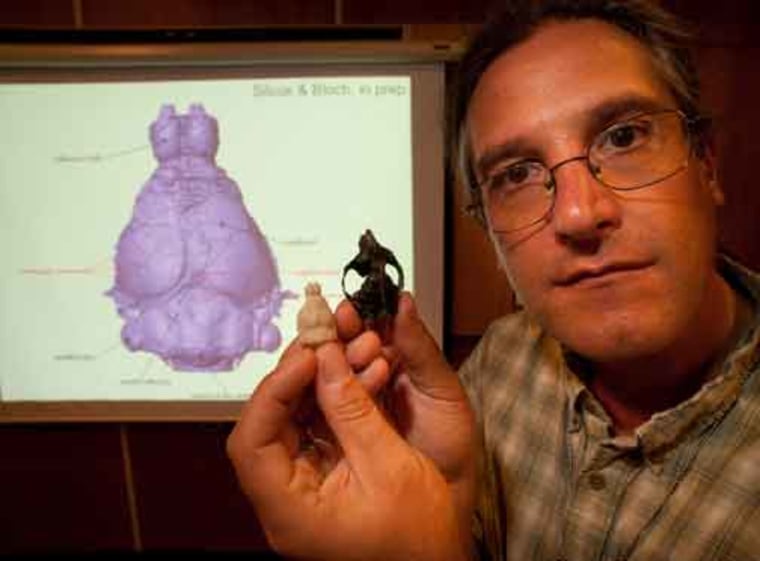One of the earliest primates lived in trees and relied more on smell than vision, a new study indicates.
A tiny cousin of the earliest ancestors of humans lived 54 million years ago in what is now Wyoming, researchers report in Tuesday's online edition of Proceedings of the National Academy of Sciences.
Researchers led by Mary T. Silcox used a CT-scan to study the 1.5-inch skull of a primate known as Ignacius graybullianus.
With that result they were able to model the brain structure of the animal showing large olfactory lobes but less development in visual areas, a possible indication of a nocturnal animal that relies on insects for food.
Many models of the ancestral primate brain are based on tree shrews, which are distantly related to humans. But "it turns out tree shrew brains are not a good model," said Silcox, an anthropologist at the University of Winnipeg in Canada and a research associate at the University of Florida's Museum of Natural History.
I. graybullianus represents a side branch on the primate tree of life, according to co-author Jonathan Bloch of the University of Florida. "You can think of it as a cousin of the main line lineage that would have given rise ultimately to us."
This animal was part of a group of primitive primates known as Plesiadapiforms, which evolved between the extinction of the dinosaurs and the first traceable ancestors of modern primates.
The research was supported by the U.S. National Academy of Science and the Natural Sciences and Engineering Research Council of Canada.
